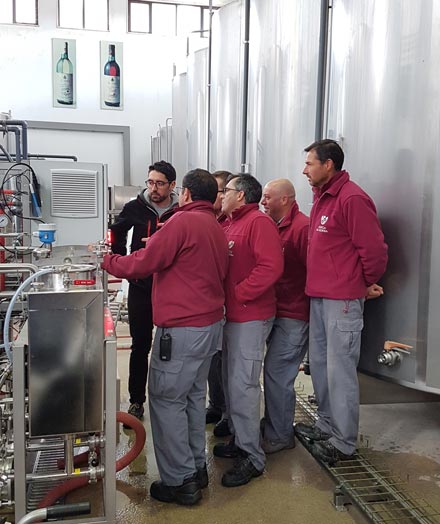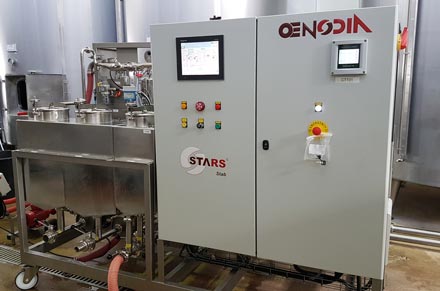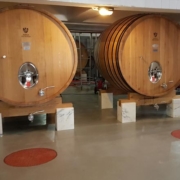A STARS shining in Alentejo
Mid-Feburary, our technical team went to Adega de Borba’s cooperative winery, in the heart of Alentejo, in order to provide the winemaking team with a training for their new equipment: a STARS30 unit for tartaric stabilization. A full week of constructive discussions allowed us to discover a leading winery in a history-rich region.
 Alentejo: that Beauty is not Sleeping
Alentejo: that Beauty is not Sleeping
Landing in Lisbon, ignoring the coast – thus disregarding the most typical touristic guidebook recommendations – and heading straight to the Spanish border. Welcome in Alentejo, a region covering the biggest part of the southern half of Portugal, east of Lisbon. The cities may seem quiet and the nature untouched, but don’t let that fool you: in Alentejo, slow and steady wins the race. Peaceful streets hide historical treasures, impressive monuments, a cuisine both rustic and on point, and wineries where liquid gems are in the making.
Wines with a personality
Alentejo’s riches can be found raw in its nature: the region produces marble and cork; its soils, made up of schist, granite and limestone are the perfect playing field for winemaking. Across history, royals and noble families took notice and established their holiday quarters in Evora or Vila Viçosa. Nowadays, wine lovers, blue blood or not, can enjoy Alentejo’s brews – and there are many. Red blends give the leading role to trincadeira, aragonez (tempranillo’s Portuguese moniker) and alicante bouschet, the latter being responsible for the reds’ ink-like intensity. Shyraz and cabernet-sauvignon are also given a chance to shine. White wines rely on arinto, roupeiro, and antao vaz’ head-turning aroma. About a million hectolitres are produced on the 22 000 hectares of the DO Alentejo – three quarters of it being red wines. Adega de Borba, with a 120 000hl production, is a key player in the region, in size as much as in name.
Adega de Borba : a pioneering tradition
Though it was encouraged by public policies, founding the cooperative winery in 1955 was a risky bet: winemaking was then carrying very little weight Alentejo’s grain-based economy. The bet was a winning one: today, Adega de Borba brings together 300 members over 2000 hectares, and employs 62 people. Of course, terroir and grape quality are at the root of success, but much more was needed to turn an asset into an achievement: a taste for innovation and constant improvement and a smart use of modern know-hows and technologies have been in Adega de Borba’s DNA for over fifty years. First, the winery looks much younger than it really is: careful maintenance and hygiene can work wonders, together with very modern, high-end equipment, among which a crossflow filter and an FT-IR analyser. The winery’s quality system could make some large industrial groups jealous. Adega de Borba is involved is many research projects. A new site for production and storage has been bought recently. A quest for efficiency, respect for the environment and the search of ease of use are guiding principles for the team, both in the day to day grind and in bigger decisions and investments. It was thus only natural for Adega de Borba to switch to membrane-based tartaric stabilization.
 STARS30: energy savings and ease of use
STARS30: energy savings and ease of use
Acquiring a STARS30 unit will allow Borba’s team to break free from cold stabilization and its shortcomings (notably energy consumption and heavy work for the cellar hands).
The winery also expects increased reliability, flexibility and a protected wine quality – with much less oxygen dissolution than with cold stabilization. Adega de Borba uses cutting edge technologies to give its terroir the spotlight, and the result is worth it: warm, supple and full reds, fragrant and fresh whites, with an unbeatable value for your money.
Nós recomendamos. Bem-vindos ao Alentejo!

